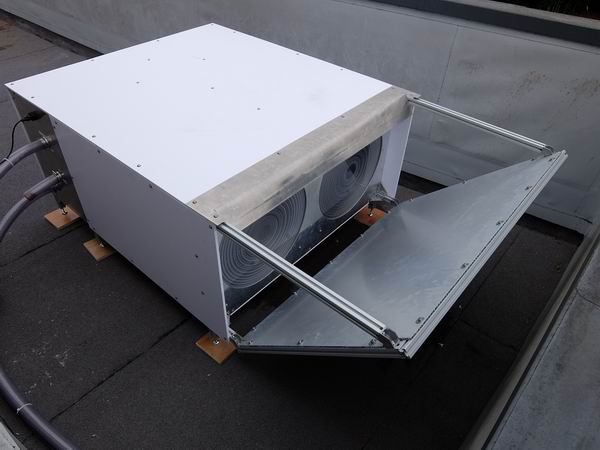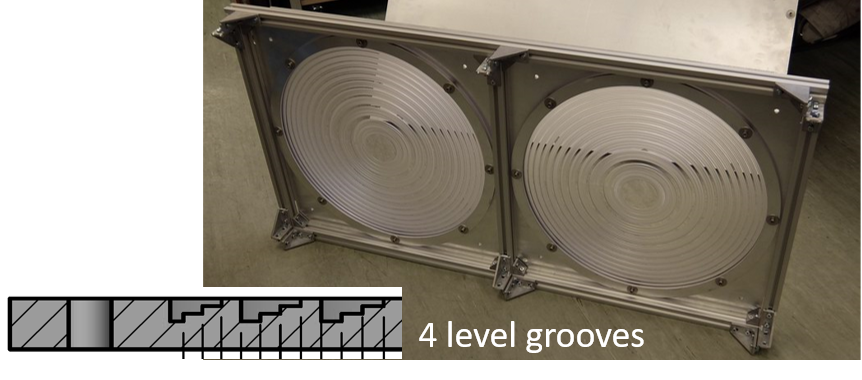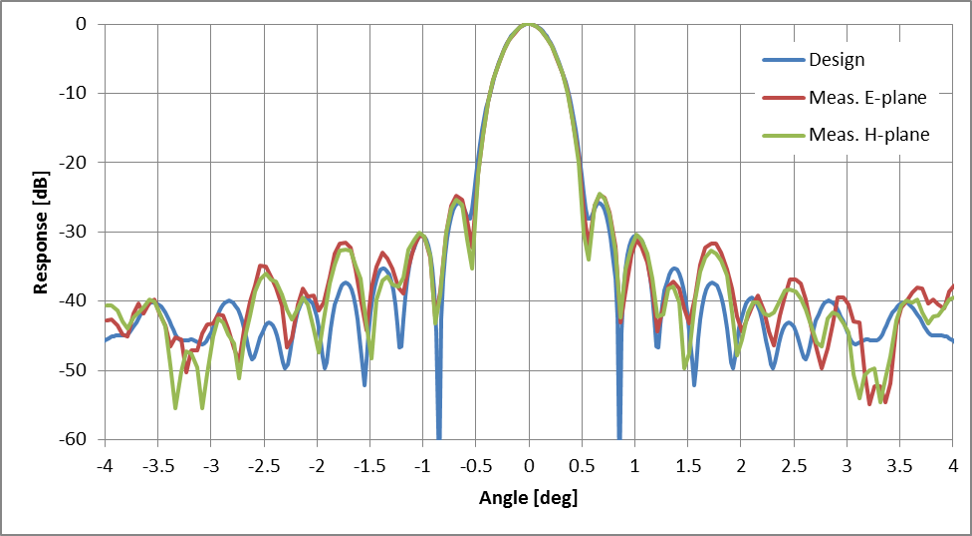Cloud radar
Millimetre wave radars are the preferred instrument to probe the structure of clouds and fog in the atmosphere due to their relatively high sensitivity to small hydrometeors (water droplets and ice particles). Most cloud radars operate at 35 or 94 GHz and are ground-based with zenith pointing antennas. Traditionally these have used high power pulsed designs exploiting vacuum tube amplifiers, typically the extended interaction klystron amplifier (EIKA). These amplifiers are capable of delivering kW of peak power and hundreds of watts of average power which is advantageous when measuring low reflectivity tenuous targets at long range. However, EIKAs are expensive, relatively large and heavy, and require cooling. Cloud radars use large diameter, very narrow beamwidth antennas to maximize link gain. Typically, Cassegrain antennas are used but these are also expensive in large diameters at millimetre wavelengths. Additionally, their sidelobe levels are fairly modest, typically only -18 to -20 dB.
Consequently, high power pulsed cloud radars are usually quite large and very expensive instruments which has limited their deployment worldwide. However, meteorologists desire more widespread cloud monitoring to improve climate models and numerical weather prediction. To address this cost barrier, several groups have been developing low power solid state cloud radars which use frequency modulated continuous wave (FMCW) modulation instead of pulsed operation. In order to achieve sufficiently high transmit-receive isolation in an FMCW cloud radar it is conventional to use two antennas, which can be a significant contribution to the system cost. We have developed a ground-based, zenith pointing, 94 GHz FMCW Doppler cloud radar technology demonstrator which achieves high performance yet with a low cost architecture that employs a solid-state electronics and dual horn-fed Fresnel zone plate (FZP) antennas. The cloud radar demonstrator is shown below, deployed on the roof of one of the buildings at the University Observatory.

The FZPs are of the phase reversing type (Wood zone plate) with a 4-level phase correction design to maximize efficiency and are manufactured in polycarbonate for low cost and ease of machining – see below. The measured far-field patterns of the FZPs are also shown below along with the design curve and show excellent agreement. The mainlobe is very symmetrical with measured 3 dB beamwidths of 0.43° in both E- and H-planes and a peak sidelobe level of -25 dB. The measured gain is close to the predicted value of 52 dBi within experimental error (with a simulated aperture efficiency of 79%). When used in the radar, these antennas will yield a two-way beamwidth of 0.30° and sidelobe level of -50 dB.


We have also been part of a team building and demonstrating a 200 GHz, 1.5 mm wavelength, cloud profiling radar, establishing the basis for the future operation of a similar Earth observing radar in space. The pulsed Doppler radar is called GRaCE: G-band Radar for Cloud Evaluation, and is grant funded by the UK Space Agency through the UK Centre for Earth Observation Instrumentation. The team comprises STFC Rutherford Appleton Laboratory (RAL), Thomas Keating Ltd. and St Andrews and Leicester universities.
The small wavelength of a 200 GHz space radar will provide enhanced global information on the distribution of small droplets in the atmosphere. When operated in tandem with existing lower frequency space radars, the dual wavelength observations will enable atmospheric scientists to better characterise the microphysical properties of hydrometeors in water and ice clouds. Such information is needed to improve the accuracy of societally important numerical weather prediction models